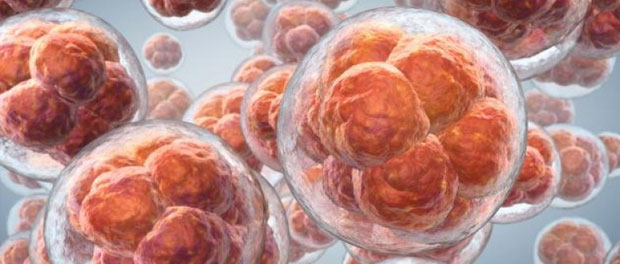
Epigenetic reprogramming occurs to the developing mammalian zygote immediately after fertilization and is crucial for proper development. This reprogramming is defined as the erasure of epigenetic marks such as DNA methylation and histone modifications. Researchers continue to uncover new information about the changes made to epigenetic marks on the embryo’s epigenome. In fact, a new study has found that when the process of epigenetic reprogramming goes awry, it can have severe consequences later in development, for instance, leading to abnormal repetitive behaviors in adulthood.
David Katz, PhD, co-senior author and assistant professor of cell biology at Emory University School of Medicine said, “Our results demonstrate how defects in reprogramming may influence the development of altered behaviors, or even complex psychiatric disorders.”
Once the sperm has fertilized the egg, the epigenetic enzyme known as lysine specific demethylase 1A, or KDM1A, erases the chemical tags on histones which are proteins that package the DNA. Specifically, histone methylation marks, or methyl groups that are attached to histone tails, are wiped away by KDM1A. KDM1A is a histone demethylase that demethylates mono-methylated and di-methylated lysines, particularly lysines 4 and 9 of histone H3 (H3K4 and H3K9). This epigenetic modification, known as histone demethylation, impacts the expression of genes nearby. Ultimately, the researchers found that maternal KDM1A is essential for the progression of mammalian embryogenesis and disruption to the process of epigenetic reprogramming can have drastic developmental consequences.
Jadiel Wasson, graduate student at Emory University School of Medicine, along with Katz, genetically engineered mice from KDM1A-deficient egg cells, known as oocytes, that then produced the enzyme during further development. The two scientists joined forces with Todd Macfarlan, PhD, who formerly worked at the Salk Institute and currently works at the National Institute of Child Health and Human Development. Together, they investigated numerous mouse strains with KDM1A gene alterations.
Macfarlan explained that KDM1A comes into play later on as the genetically engineered mice develop. This occurs because their fathers pass on a good copy of the gene. However, the histone demethylase isn’t present at a key stage known as the “maternal-to-zygote transition.”
The mice used in the study, although genetically engineered, may simulate other various disruptions of the epigenetic reprogramming process during early development. According to Katz, certain genetic factors or environmental influences, for example, hormones or the age of the parents, could cause these missteps in epigenetic reprogramming.
When egg cells lack this histone demethylase entirely, a lot of the histone modification marks persist after fertilization when they shouldn’t. This causes thousands of genes specific to egg and sperm to turn on when they should be repressed, while also turning off numerous genes necessary for embryonic development.
“Usually, that’s lethal,” Katz said. “The fertilized egg can’t tolerate it at all, and is unable to divide beyond the two cell stage.”
A few of the mice Wasson and Katz examined, however, still had small amounts of the KDM1A enzyme in their egg cells. Most of the mice died in utero or immediately following birth, but a few survived into adulthood. Although they appeared to be normal, the researchers noticed that they behaved very strangely.
According to Wasson, their atypical behavior became apparent when several mice were in the cage simultaneously. The mice that had reduced KDM1A ground up their food and combined it with their bedding. They also scratched and dug excessively. In addition, the researchers tested the mice’s marble burying, a task that previous studies used to asses obsessive-compulsive behavior in genetically engineered mice. The researchers could count how many glass marbles were buried after a set time and found that the mice with traces of KDM1A were even more avid marble buriers.
To find out what was causing the strange behavior, the researchers looked at changes in the brains of mice with reduced KDM1A. One potential cause, they hypothesized, could lie with altered imprinted genes. Normally, one copy of the imprinted genes is silenced depending on whether it comes from the mother or the father. However, in these KDM1A-reduced mice, these patterns were disturbed.
“The most likely scenario, and one that we are pursuing, is that the disruptions in gene expression ultimately influence the wiring of the brain,” Katz noted. “This could be via imprinting, but is just as likely to be via disruption of normal neuronal development.”
In future studies assessing the role of the histone demethylase KDM1A in brain development, Macfarlan and Katz plan to engineer and investigate mice that have a more subtle reduction of KDM1A in egg cells so that more mice can be studied successfully to progress research. These results could offer clues into how early developmental changes in humans affect diseases that present similar behaviors and symptoms, such as autism or obsessive-compulsive disorder.
Source: Wasson, J.A., Simon, A.K., Myrick, D.A., Wolf, G., Driscoll, S., Pfaff, S.L., Macfarlan, T.S., Katz, D.J. (2016). Maternally provided LSD1/KDM1A enables the maternal-to-zygotic transition and prevents defects that manifest postnatally. eLife, 20:282-289.
Reference: Woodruff Health Sciences Center. Disruptions to embryonic reprogramming alter adult mouse behavior. Emory University News Center. 1 Feb 2016. Web.

